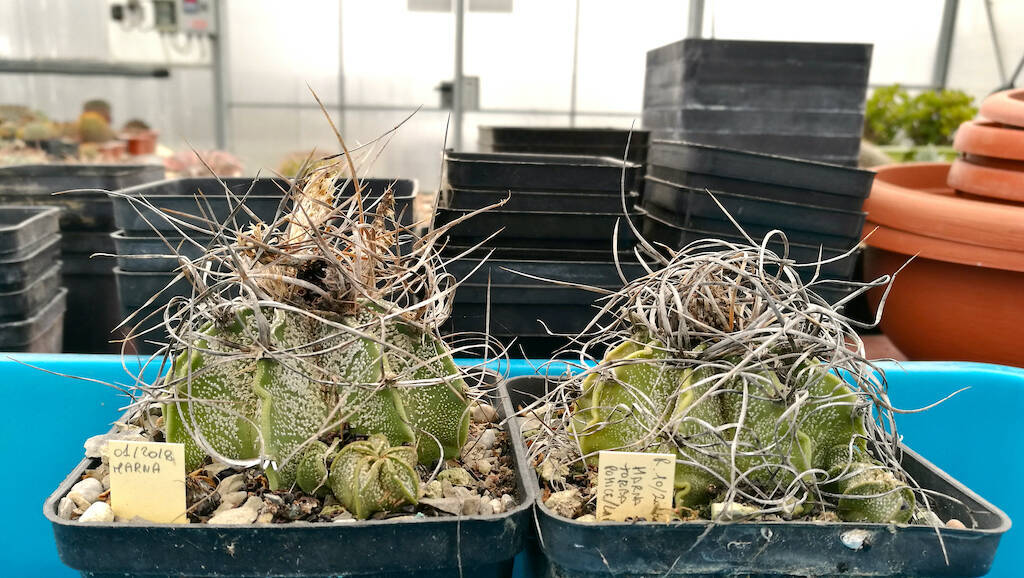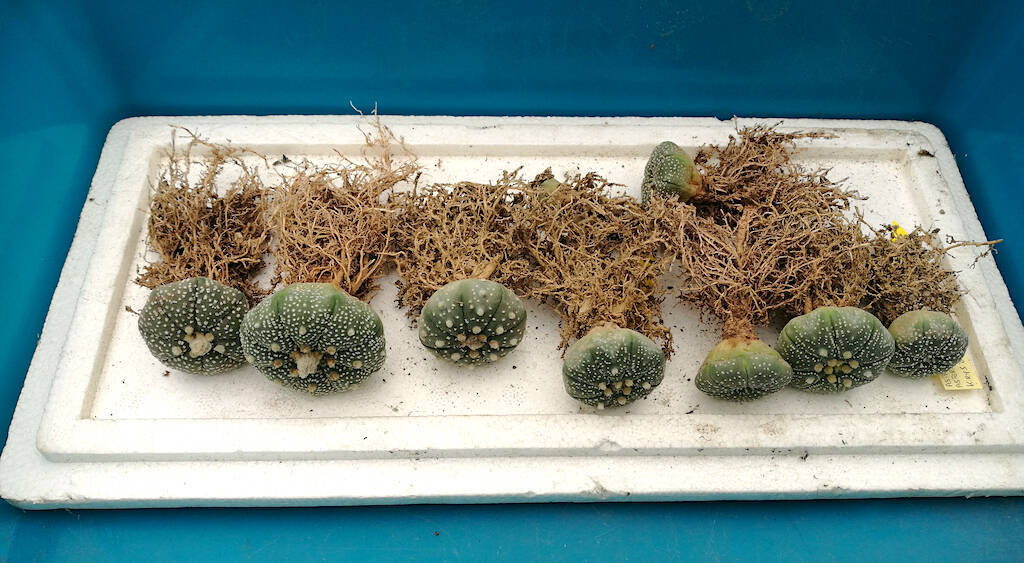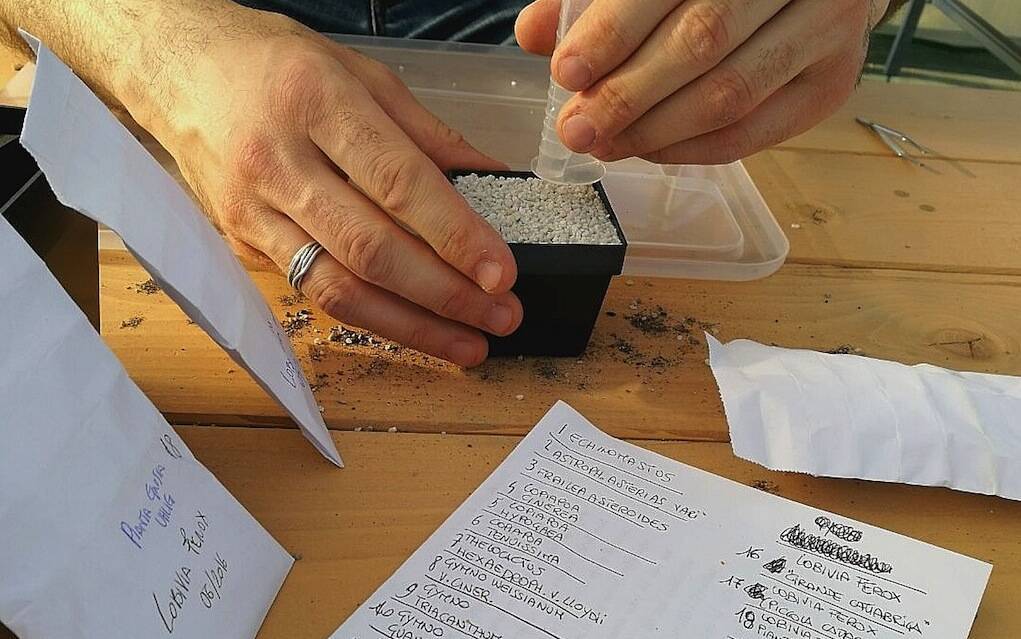Why damn yourself with sterilized soil, perfectly clean pots, fungicide, transparent bags and so on, when you can let our plants do everything related to sowing? Exactly as it happens in Nature, in short. Jokes aside, those who have many plants know well that finding themselves with perfectly formed seedlings inside the pots, next to the mother plants, is far from rare. Generally we notice it during repotting, when we can observe our succulents with particular attention, because the spontaneously born seedlings are small and tend to “camouflage” themselves with stones and aggregates in the substrate, or they are found so close to the stem of the mother plant to be invisible to a superficial look. Over the years, in the pots of my plants, I have often found germinated and autonomously grown seedlings, in particular of genera such as Astrophytum, Epithelantha, Thelocactus, Mammillaria. A couple of years ago I even found a small plant of Euphorbia obesa already well formed, grown among the pebbles outside the greenhouse, in the shade of a large pot containing an Agave. Today the Euphorbia is in a 5 centimeters pot inside the greenhouse and continues to grow regularly. I had to reluctantly remove it from the outside and place it in a pot to prevent the cold and damp winter in North Italy from killing it, otherwise I would have gladly let it grow where it was born.
In these days, during the repotting of some Astrophytum capricorne of my sowing, I have found many seedlings and various seedlings born and grown independently in the pots of the mother plants (you can already see some of them in the cover photo, above). Hence the idea of documenting and analyzing “spontaneous sowing” in the following article. (…)
Per proseguire nella lettura dell'articolo Accedi o Abbonati
To continue reading the article LogIn or Subscribe





